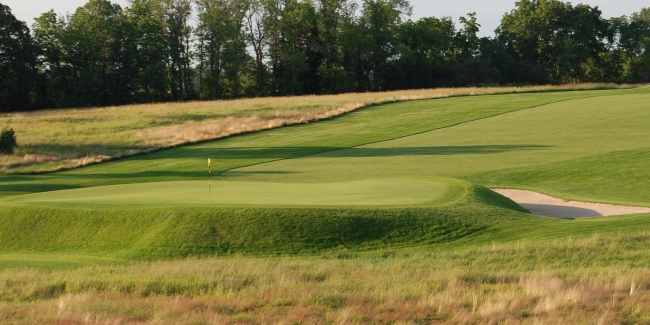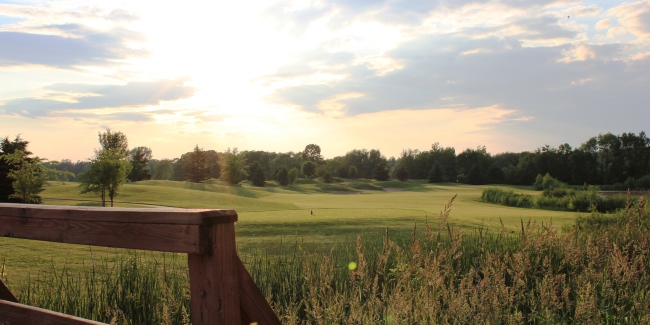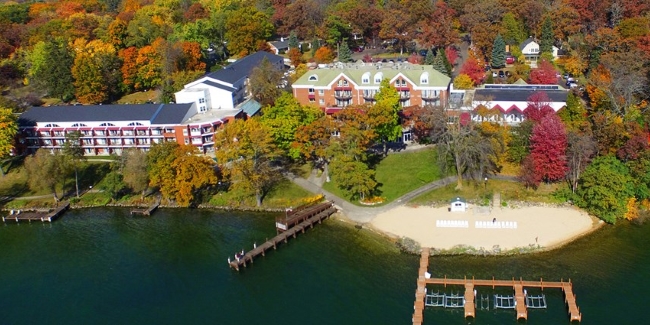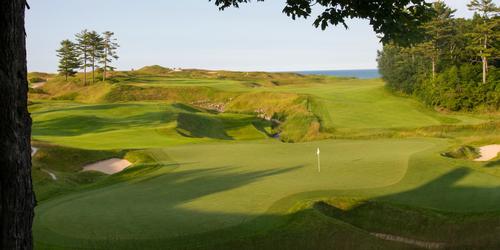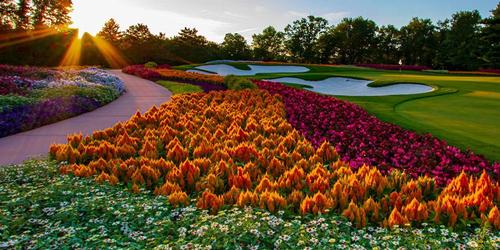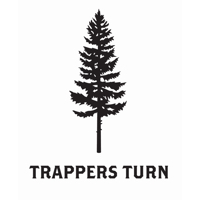Golf In Green Lake Offers Some Of Wisconsin's Best Courses
...And A Welcome Respite
By Steve Habel
I have to be honest with you - when I was approached about visiting and playing golf on the four courses in the area in and around Green Lake, Wisconsin, I knew nothing about the place.
So I did my research and found out that Green Lake is known as the oldest resort town west of Niagara Falls, boasts 27 ½ miles of shoreline along Wisconsin's deepest natural inland lake and offers the oldest golf course in the state as well as one of the nation's top 100 classic tracks.
Well, it didn't take me long to sign on the dotted line and make my airplane flight reservations.
Once in Green Lake and its sister town of Berlin, I enjoyed a little slice of golf heaven and a great place to play golf on courses of varied difficulty and tests and a wonderful community in which to relax and unwind. There's little wonder that the area has been a mainstay for well-heeled and normal folk alike from Chicago (about 180 miles to the south), Green Bay, Milwaukee and Madison (each about an hour and a half's drive) through the years.
Our itinerary is centered on golf so we teed it up at four of the area's courses - Tuscumbia Country Club, the Links and Woodlands courses at Lawsonia and 18 of the available 27 holes at Mascoutin Golf Club. Each had their own appeal and all left a lasting impression and the desire to return to Green Lake County for another round or two.
We opened the trip with a round at Tuscumbia Country Club, the aforementioned oldest course in Wisconsin. Founded in 1896, the 6,514-yard, par-71 layout is constantly ranked as one of the best manicured courses in the state.
The playing experience at Tuscumbia CC provides a park-like setting of majestic evergreens and century-old hardwoods, thick rough, tight fairways and a rolling landscape and the course plays much longer and tougher than its rating (71.0) and slope (127) would indicate.
Next up was the Woodlands course at Lawsonia, the newer of the two tracks offered here and a stunning contrast to its older sister, the Links courses. The Woodlands, playing to a par of 72 and at 6,586 yards from back tees, is highlighted by densely tree-lined fairways, upwards of 80 sand bunkers and large Bentgrass putting surfaces.
There are elevation changes aplenty (most notably at the 169-yard par-3 third hole, which drops 65 feet from tee to green) and water comes into play four times on the round. Considered by many to be among the top five toughest courses in the state, the Woodlands is a modern, target-golf masterpiece that asks the golfer to strike each and every shot with conviction.
As great as the experience at the Woodlands was, it paled in comparison to the 180-degree different tests offered on Lawsonia's premier course, the Links.
The Links was built by the H. O. Stone Company in 1930 by William Langford and Theodore Moreau, who traveled to Scotland to sketch and photograph famous golf holes at links-style courses before laying out Lawsonia with multi-tiered putting surfaces, some 90 bunkers and deep rough.
The Links is predominantly treeless and wind comes into play due to green elevation and the open fairways. It features gently rolling terrain, bent grass fairways, multi-tiered, unusually elevated, moderately fast greens.
Playing at 6,853 yards from the back tees, the Links is listed at No. 85 on Golf Digest's list of top public courses and the second best public courses in Wisconsin (right after Whistling Straits).
Despite being a shorter length compared to most newer courses, the design of the Links is challenging and holds golfers accountable for misses inside 100 yards. The green complexes were unique and challenging, with deep, penalizing greenside bunkers placing a premium on decision and shot-making.
The signature hole at the Links is the 161-yard par-3 seventh because of its interesting story; there is supposedly a box car buried underneath the green, creating an extreme elevation. The only relief for a miss off the tee was a small area to the left, anything that was right, short or long creates a 40-foot, uphill battle just for bogey.
I've played golf around the world and at many of the planet's great links courses and would rank the Links at Lawsonia on my short list of favorite places to play.
Our final round was at Mascoutin Golf Club, which bills itself as Wisconsin's best kept golf secret. It might be time for a new catch slogan because the word is out on the quality and variety of golf here.
The course's original Red and White nines were routed through century old trees and a gently rolling setting by Larry Packard and opened for play in 1976. The very popular Blue nine, quite different in its challenges, was designed by Rick Jacobson, and debuted in 1999.
We got to play the 6,895-yard original course and enjoyed the test. Mascoutin GC is more bark than bite if you can hit quality shots, but with three par-4s of 415 yards or more (including the knee-knocking 470-yard third) on the Red nine and a pair of stout par-3s on the White, there's more than enough golf here for any level of proficiency and verve.
Our accommodations for this trip were at the lush, lakeside Heidel House Resort & Spa, which, for the past 60 years, has provided an unforgettable Green Lake experience of luxury and respite from the world's daily grind.
And that, folks, is what's so great about coming to Green Lake. So what are you waiting for?
Revised: 09/30/2016 - Article Viewed 31,865 Times
About: Steve Habel
![]() Steve Habel is a contributing editor for GolfTrips and its associated websites. A 26-year industry veteran, he regularly contributes to various regional, national and international golf publications and has played and written about more than 1,600 golf courses around the world.
Steve Habel is a contributing editor for GolfTrips and its associated websites. A 26-year industry veteran, he regularly contributes to various regional, national and international golf publications and has played and written about more than 1,600 golf courses around the world.
Habel is also senior editor for Horns Illustrated magazine, a publication focusing on University of Texas sports, as well the San Antonio Spurs beat writer for The Sports Xchange. He is a correspondent for the Austin American-Statesman and frequently files stories and features for The Associated Press and Preferred Lifestyle magazine.
Habel, who lives in the Austin, Texas area, has worked media coordinator for World Golf Hall of Fame player and golf architect Tom Kite as well as for renowned golf architects Roy Bechtol and Jeffrey D. Brauer.
He is a member of the Golf Writers Association of America, the Texas Golf Writers Association and the Football Writers Association of America.

